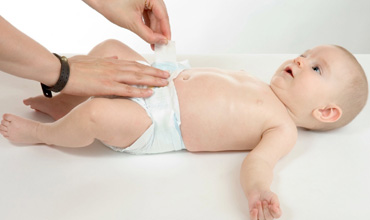Diarrhoea In The Under-Fives: Constraints Encountered By Care Providers In Its Management

Abstract:
Diarrhoea continues to be one of the major causes of
dehydration in the under-five population especially in the developing
countries; resulting in high infant mortality rate, particularly in sub-Saharan
Africa. Diarrhoea resulting to dehydration kills more children under five years
of age than malaria, AIDS, measles and tuberculosis. It is actually the second
leading cause of death in children under five in the world and responsible for
1.9 million deaths per year, following pneumonia, which kills 2 million per
year. As such deaths via diarrhea represent 17% of deaths among children
under-five; out of a total of 11 million deaths annually. This mostly results
from the consumption of contaminated food and drinking of water from doubted
sources. World-wide, around 1 billion people lack access to improve water and
2.5 billion have no access to basic sanitation. The objectives of the study
were:
ü To assess the
knowledge of care providers in identifying cases with dehydration in the
under-fives.
ü To assess their
practices toward the adequate management of dehydration in the under-fives.
ü To find out
the difficulties encountered in its proper management.
ü To propose
practical solutions in order to curb its occurrence.
A descriptive cross-sectional design was employed, in
which primary data was collected from a sample in the study population in order
to collect baseline data to be a representative of the study population during
the study period, in order to assess the knowledge of care providers of Mankon
Medicalized Health Centre and Nkwen Medicalized Health Centre in the assessment
and management of dehydration in the under-fives.
Data was collected from care-providers of both Mankon
and Nkwen Medicalised Health Centres who had served in these health facilities for
at least six months and who are versed with the causes of dehydration in the
under-fives, its clinical manifestations and the adequate implementation of
proper management.
The convenient sampling technique for this study in
which all the eight (8) care providers managing clinical cases in the medical
ward and the twelve (12) care providers managing clinical cases in the
paediatric ward of both Mankon and Nkwen Medicalised Centres were involved in
the study and questionnaire administered to them.
A structured questionnaire was designed to collect
primary data from respondents. This instrument was structured as such to tailor
the specific objectives of the study:
Results show that; out of the 22 respondents, 11 (50%)
were Nursing Assistants (NA), 2.0 (9.09%) were State Enrolled Nurses (SEN),
then 8.0 (36.36%) were State Registered Nurses (SRN) and 1.0 (4.54%) a Bachelor
in Nursing Science degree (BNSc).
Six nurses have worked for between 6-12 months, 7
nurses for between 1-5 years, 3 nurses for between 5-10 years and 4 nurses for
between 20 years and above. Out of the 22 Care–providers, 13 (59.09%) suggested
that dehydration is excessive loss of fluid from the body, while 9.0 (40.90%)
of the respondents thought that dehydration is loss of body fluids and electrolytes.
However, all the 22 respondents presented similar causes and clinical pictures
and state that dehydration is classified into 3 types in terms of severity.
All the 22 respondents identified 3 types of
dehydration and offered specific solutions as to each of them. They equally
attribute specific length of time required to manage each type of dehydration.
The 22 participations also thought that to properly manage this condition,
appropriate tools (urinary bag or any calibrated bowl) should be used to
estimate the amount of fluid lost.
On the clinical manifestations of dehydration, 49
responses were gotten as follows, 11 (23.40%) could not distinguish signs and
symptoms as to mild, moderate and severe dehydration, 12 (25.53%) stated
difficulties as regard to management approaches, while 24 (51.06%) related
their difficulties to mother’s compliancy.
All the respondents suggested similar causes and
clinical pictures and classified it into three types. All of them above implies
that with the knowledge on dehydration, nursing staff can easily reverse this
condition with less fatality using specific management approach corresponding
to the degree of dehydration, and prevent complications.
Health advice offered to mothers by nurses on the
management approaches at home fall under four items viz: O.R.S., water and
fluid, nutrition and hygiene. 18 (33.96%) provided health talks on hygiene. If
faeco-oral infections should be avoided, hygienic measures must be implemented,
14 (26.41%) nurses advocated on the use of O.R.S which should be taken at home.
Keywords: Sanitation, Diarrhoea, Dehydration, Under-fives, Oral Rehydration solution, Hypervolemia, Fluid Replacement Therapy
References:
[1] Angelucci D. Todaro A. (1993): Reversing acute dehydration Nursing.
[2] Cumberland, David A.K, Lain
H. Wilson, Richard J. Leaver, Antonia B. (2009): Care of the critically ill patient in the Tropics and Sub-tropics (first
edition, pp. 76, 81-83).
[3]
Hillie T (2006) Nanotechnology, water, and Development. Dillon, Meridian
institute.
[4]
Hoxie NJ, Davis JP, Vergeront JM, Nashold RD, Blair KA (1997)
Cryptosporidiosis-associated
mortality following a massive waterborne outbreak in Milwaukee, Wisconsin. Am J
Public Health 87: 2032-2035.
[5]
Hunter P (1997) Waterborne Diseases. Epidemiology and Ecology.
Chichester:
Wiley.
[6]
Kumar SG, Jayarama S (2009) Issues related to sanitation failure in India and
future perspective. Indian J Occup Environ Med 13: 104.
[7]
Mac Kenzie WR, Hoxie NJ, Proctor ME, Gradus MS, Blair KA, et al. (1994). A
massive outbreak in Milwaukee of cryptosporidium infection transmitted through
the public water supply. N Engl J Med 331: 161-167.
[8]
Meinhardt PL (2010) Recognizing water borne disease and the health
effects of water
pollution: American Water Works Association and Amot Ogden Medical center.
[9]
Sprigge N.M., (2010): Fluids and
electrolytes balance: Nursing consideration (second edition), Philadelphia:
Lippincott.
[10]
Pandve HT (2008) Environmental sanitation: An ignored issue in India. Indian J
Occup Environ Med 12: 40.
[11]
United Nation Children’s Fund (2009): Dehydration
in the under-fives.
[12]
World Health Organization (2003) Guidelines for Drinking water
Quality, 3rd
edn.
[13]
World Health Organization (2010): Integrated
Management of Childhood Illness: Treat the child.

